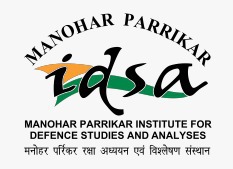What Does Pakistan Hope to Achieve with Nasr?
The commentary addresses the pros and cons of Pakistan’s development of Nasr and concludes that it can be neutralised by India through innovative measures.
- Ali Ahmed
- August 17, 2011
The commentary addresses the pros and cons of Pakistan’s development of Nasr and concludes that it can be neutralised by India through innovative measures.
Though Pakistan and Afghanistan still continue to be embroiled in religious and ethnic conflict, the rest of South Asia appears keen to check and go beyond such tendencies.
If the Army withers away then a fragmentation of Pakistan into a ‘Lebanonized’ state would become inevitable.
Both India and Pakistan must immediately review their security practices for the protection of vital and vulnerable national assets, which in Pakistan’s case must also include nuclear weapons.
The Summit was part of Russia’s ongoing initiatives to play a greater role in stabilising the region before the expected withdrawal of American troops from Afghanistan.
The article fleshes out Pakistani first use options for an informed discussion on the implied nuclear threat that Pakistan sometimes resorts to.
The elimination of OBL might not accelerate US withdrawal from Afghanistan, but in all probability this marks the beginning of the end of active US military presence in Afghanistan.
The strategic outlook of the political, bureaucratic and military elites in Pakistan was shaped by historical exigencies, geopolitical location, Pakistan's self-perception, and its Islamic credentials. Pakistan's military-dominated leadership formulated strategies towards regional and extra-regional powers based on its threat perceptions. The strategies adopted have not necessarily resulted in fully achieving the objectives for which they were formulated.
As of now, institutions within Pakistan are strong enough to prevent both the balkanisation of Pakistan as well as the possibility of the state falling into theocratic hands. Pakistan is also unlikely to wind up terror operations against India as it considers the terrorist organisations to be its strategic assets. Internal disturbances within Pakistan allow it to maintain plausible deniability and the shifting of blame on to non-state actors over whom Pakistan claims it has no control. This paper argues that India’s response to terror will have to be well thought out.
In rethinking Cold Start as a default option and working towards proactive ‘contingency’ options, India is a step ahead in doctrinal shadow boxing.



